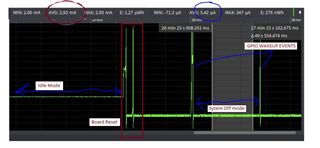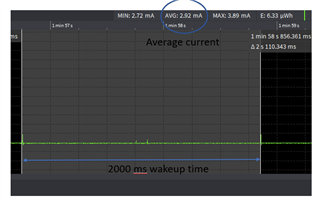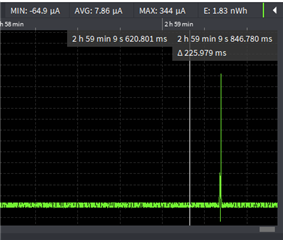Hello, I am working on low power modes of MCU M33 core in nRF9160 SOC.
From the document of nRF9160 product specification v1.0, understood that there are two low power modes for M33 core
1. System ON Mode
a. Low power mode - Default mode after reset
b. Constant Latency mode.
2.System OFF Mode - The device is put into System OFF mode using the REGULATORS register interface.
As you suggested in my previous case Case ID: 246126, In serial Link monitor example code, I found enter_sleep() function which is actually System OFF Mode.
I have changed the enter_Sleep() function to enter into system ON mode instead of System OFF mode as in the example.
Below are my code which I am trying to wake up using GPIO button from system ON mode - low power mode but not successful.
When I checked the TASKS_LOWPWR register in embedded segger studio mode, the value in this register is still 0 though I am writing 1 to this register using nrf_power_task_trigger(NRF_POWER_NS,NRF_POWER_TASK_LOWPWR) API
I have also checked operation of the System ON mode - Constant Latency Mode, TASKS_CONSTLAT register is still 0.
void enter_sleep(void)
{
nrf_gpio_cfg_input(CONFIG_SLM_INTERFACE_PIN,
NRF_GPIO_PIN_PULLUP);
nrf_gpio_cfg_sense_set(CONFIG_SLM_INTERFACE_PIN,
NRF_GPIO_PIN_SENSE_LOW);
lte_lc_power_off();
bsd_shutdown();
nrf_power_task_trigger(NRF_POWER_NS,NRF_POWER_TASK_LOWPWR);
}
Can you guide me how to enable these modes- low power and contant latency mode.





